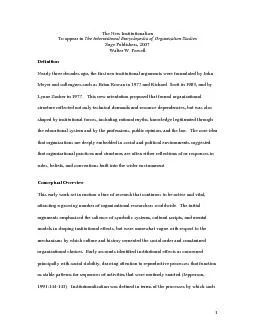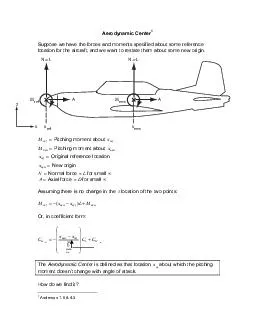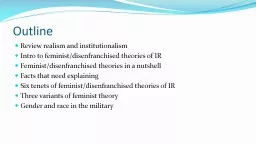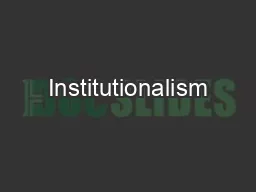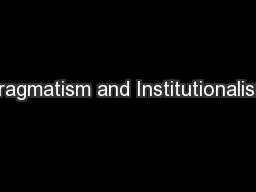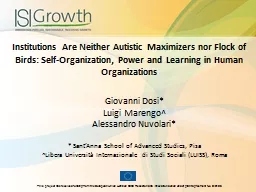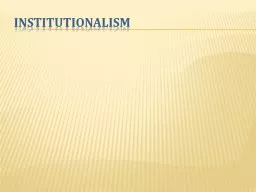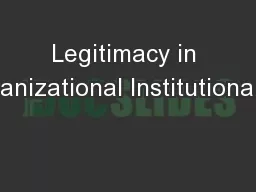PDF-The New Institutionalism
Author : tawny-fly | Published Date : 2015-08-16
To appear in The International Encyclopedia of Organization Studies Sage Publishers 2007 Walter W Powell Definition Nearly three decades ago the first neoinstitutional
Presentation Embed Code
Download Presentation
Download Presentation The PPT/PDF document "The New Institutionalism" is the property of its rightful owner. Permission is granted to download and print the materials on this website for personal, non-commercial use only, and to display it on your personal computer provided you do not modify the materials and that you retain all copyright notices contained in the materials. By downloading content from our website, you accept the terms of this agreement.
The New Institutionalism: Transcript
Download Rules Of Document
"The New Institutionalism"The content belongs to its owner. You may download and print it for personal use, without modification, and keep all copyright notices. By downloading, you agree to these terms.
Related Documents

